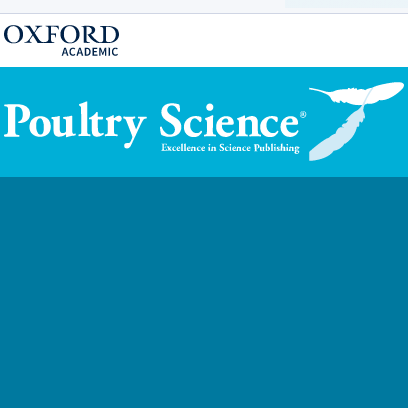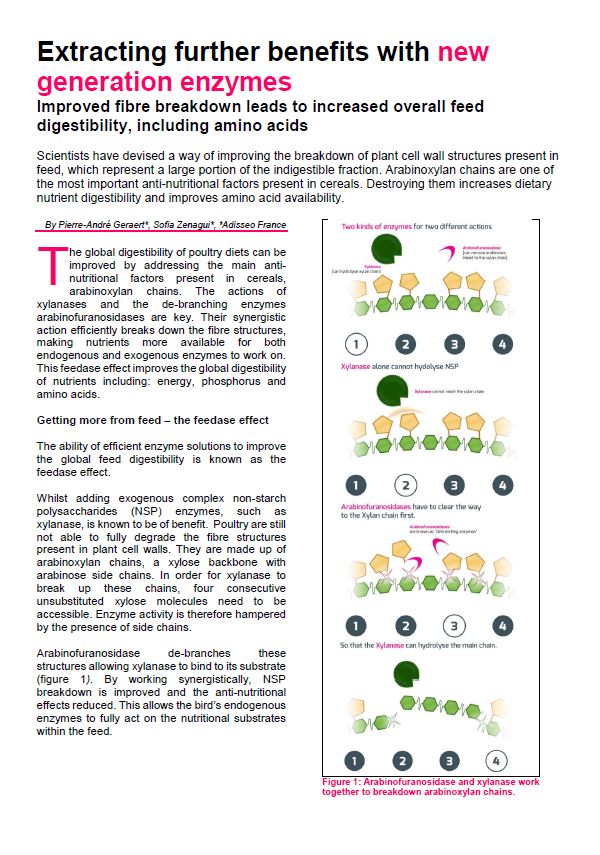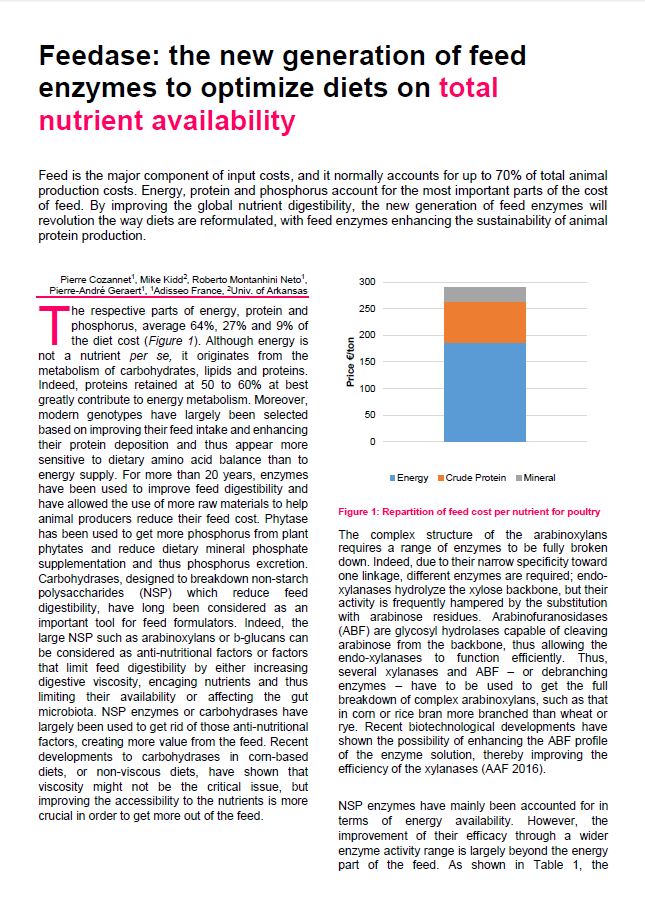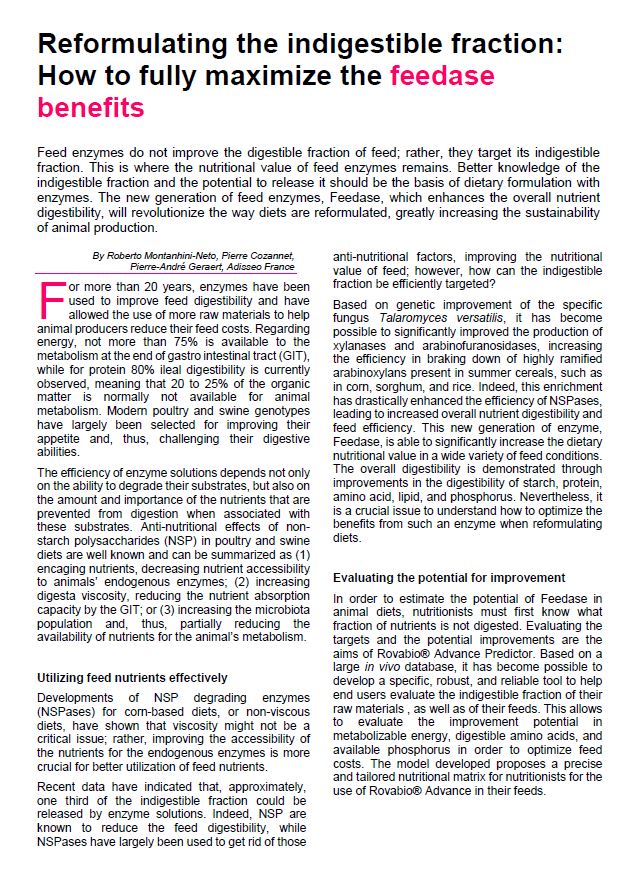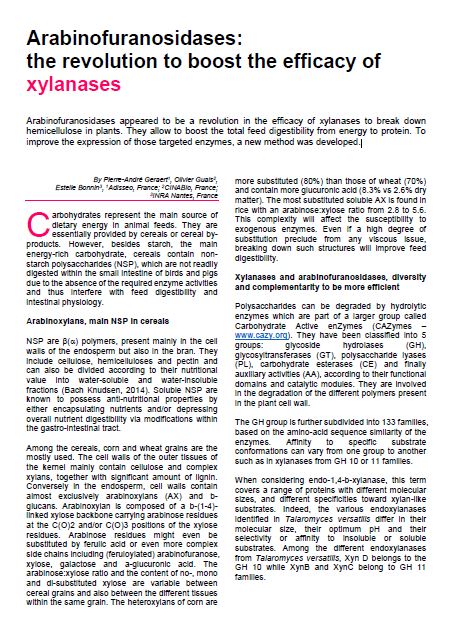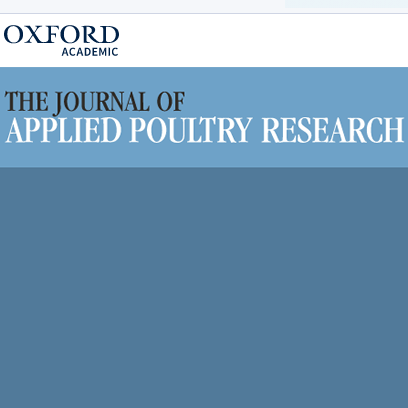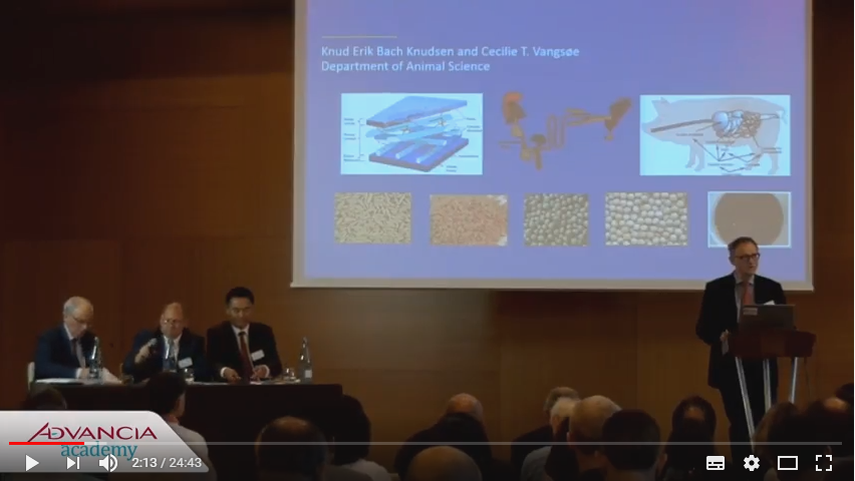Next-generation non-starch polysaccharide-degrading, multi-carbohydrase complex rich in xylanase and arabinofuranosidase to enhance broiler feed digestibility
Published in Poultry Science, Volume 96, Issue 8, 2017
This study was carried out to evaluate the effect of a multi-carbohydrase complex (MCC) rich in xylanase (Xyl) and arabinofuranosidase (Abf) on overall broiler feed digestibility in broilers…
Extracting further benefits with new generation enzymes
Published on www.wattagnet.com - Issue 1, March 2017
Improved fibre breakdown leads to increased overall feed digestibility, including amino acids.
Scientists have devised a way of improving the breakdown of plant cell wall structures present in feed, which represent a large portion of the indigestible fraction. Arabinoxylan chains…
Feedase: the new generation of feed enzymes to optimize diets on total nutrient availability
Published in All About Feed - Issue 8, 2016
Feed is the major component of input costs, and it normally accounts for up to 70% of total animal production costs. Energy, protein and phosphorus account for the most important parts of the cost of feed…
Reformulating the indigestible fraction: How to fully maximize the feedase benefits
Published in All About Feed - Special Enzymes Issue, September 2016
Feed enzymes do not improve the digestible fraction of feed; rather, they target its indigestible fraction. This is where the nutritional value of feed enzymes remains.
Arabinofuranosidases: the revolution to boost the efficacy of xylanases
Published in All About Feed - Issue 1, 2016
Arabinofuranosidases appeared to be a revolution in the efficacy of xylanases to break down hemicellulose in plants. They allow to boost the total feed digestibility from energy to protein. To improve the expression of those targeted enzymes, a new method was developed.
Formulating poultry diets based on their indigestible components
Published in Poultry Science, Volume 93, Issue 9, 2014
Since it started as an organized economic activity, poultry production has been undergoing an evolution toward the optimization of its feed formulation features. Notably, advances in the knowledge of birds’ nutrient requirements have allowed recommendations that are increasingly closer to the needs of the birds…
Feed enzymes: The science, practice, and metabolic realities
Published in The Journal of Applied Poultry Research, Volume 22, Issue 3, 2013
The use of exogenous feed enzymes in poultry diets is becoming a norm to overcome the adverse effects of antinutritional factors and improve digestion of dietary components and bird performance. In this paper, an overview of the science behind the use of feed enzymes and the current status of enzyme technology is provided…
